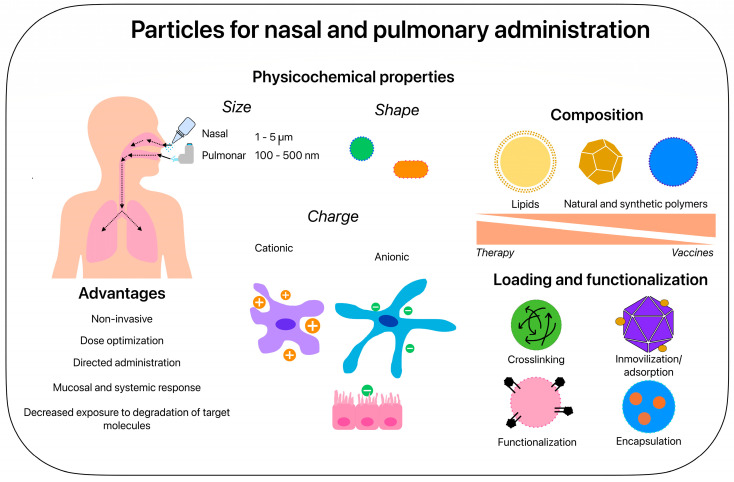Figure 1.
Particles for nasal and pulmonary administration. The main physicochemical properties to consider for the preparation of particles intended for TB prophylaxis and treatment are size, shape, and surface charge. Sizes from 100 to 500 nm are preferable but not exclusive for nasal administration, while 1–5 μm particles are optimal for intrapulmonary administration. Shapes such as those present in nature are also favorable for the internalization of particles in the lung, mainly those that are spherical or rod-shaped, as is the case for Mtb. Additionally, a preferential but not exclusive interaction between cationic microparticles (+) and macrophages and anionic nanoparticles (−) with dendritic and epithelial cells has been documented. All these properties in turn will depend on the fabrication materials. For the formulation of TB vaccines, the most reported materials are natural and synthetic polymers, followed by lipids (for the fabrication of solid lipid nanoparticles and liposomes), while, for TB treatment formulations, the use of lipids is most frequent, followed by synthetic and natural polymers.

